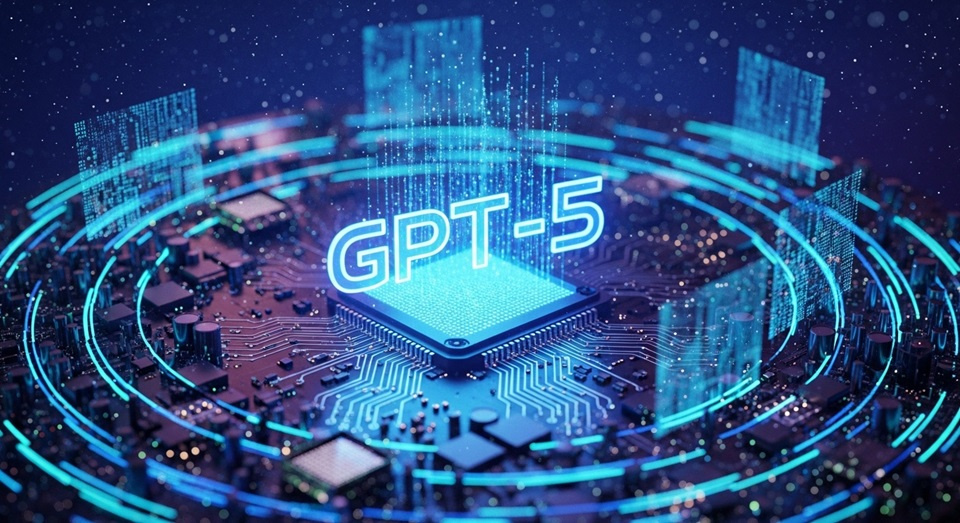
GPT 5: The Next Revolution in AI?
The world of artificial intelligence is constantly evolving, with each new development pushing the boundaries of what’s possible. Among the most anticipated advancements is the arrival of OpenAI’s next-generation large language model: GPT-5. Following the groundbreaking success and widespread adoption of its predecessors, particularly ChatGPT, the anticipation surrounding GPT-5 is palpable. The mere mention of “gpt 5” sparks discussions across tech forums, news outlets, and research communities, making it a consistent top Google Trend.
While OpenAI, the powerhouse behind these innovations, has maintained a level of strategic ambiguity regarding the exact gpt 5 release date, the buzz and speculation continue to intensify. The progression from GPT-3 to the more refined GPT-4 set a high bar, and the industry is eager to see the leaps in performance, capabilities, and ethical considerations that GPT-5 will bring. The related search terms, including “chatgpt 5 release date,” “gpt 5 release,” and “gpt-5 release date,” consistently rank high in search queries, reflecting the public’s keen interest.
One of the key aspects fueling this anticipation is the potential for significant advancements in several areas. It is widely expected that GPT-5 (gpt5 or gpt-5) will showcase a substantial increase in the scale of its neural network, potentially boasting trillions of parameters. This increase in size often correlates with an enhanced ability to understand context, generate more coherent and nuanced text, and tackle more complex reasoning tasks. The performance benchmarks of GPT-4 already impressed with its multimodal capabilities (handling both text and images), and expectations are high that GPT-5 will further refine and expand these abilities, possibly integrating other modalities like audio and video understanding.
The development of GPT-5 is closely watched by the entire tech ecosystem, including giants like Microsoft, which has a significant partnership with OpenAI and has integrated their models into products like Microsoft Copilot (formerly Bing Chat). The advancements in Open AI technology directly influence the capabilities of these integrated platforms, making the arrival of openai gpt 5 a pivotal moment for the broader AI landscape.
Central to the narrative around GPT-5 is the figure of Sam Altman, the CEO of OpenAI. His insights and occasional hints about the future of open ai often fuel the speculation surrounding their upcoming models. The industry watches closely for any announcements or openai livestream events that might offer clues about the progress and potential launch of gpt 5. These openai livestream events have become key moments for unveiling new features and advancements, and the anticipation for a gpt 5 release announcement through such a channel is significant.
The term “chatgpt 5” is also frequently used interchangeably with GPT-5 in public discourse, highlighting the strong association between OpenAI’s foundational models and their popular conversational AI interface. While ChatGPT is the user-facing application, it is powered by the underlying GPT models. Therefore, advancements in gpt 5 directly translate to potential upgrades and new features within chat gpt 5.
Beyond just scale and multimodality, the AI research community is hoping that GPT-5 will demonstrate improvements in areas that have been challenges for previous large language models. These include enhanced reasoning abilities, better handling of long-context dependencies, increased factuality and reduced instances of “hallucinations” (generating incorrect information), and improved alignment with human values and ethical considerations. The development team at open ai is likely heavily focused on addressing these critical aspects to ensure that gpt 5 is not only more powerful but also more reliable and responsible than its predecessors.
The competitive landscape also plays a role in the anticipation surrounding GPT-5. While OpenAI has established itself as a leader in the field, other organizations are also making significant strides in AI research and development. The arrival of a powerful new model like gpt 5 will likely spur further innovation and competition across the industry, ultimately benefiting users through more advanced and accessible AI tools.
Interestingly, the trend breakdown also includes the keyword “mini, 5.” This could refer to various smaller-scale AI models or perhaps even a smaller, more focused version of GPT-5 that OpenAI might be exploring for specific applications. The exact meaning behind this related keyword highlights the diverse range of interest within the broader “gpt 5” trend.
As we await official confirmation and a concrete gpt 5 release date from OpenAI, the speculation and excitement within the tech community continue to build. The potential impact of gpt 5 on various industries, from content creation and customer service to research and education, is immense. It represents the next step in the ongoing journey towards increasingly sophisticated and capable artificial intelligence. The world is watching closely to see what “open ai gpt 5” will ultimately deliver and how it will shape the future of technology.
In conclusion, the anticipation surrounding GPT-5 is a testament to the transformative power of large language models and the groundbreaking work of OpenAI. While the exact chatgpt 5 release date remains under wraps, the consistent high ranking of “gpt 5” and its related keywords in Google Trends underscores the profound interest in this next-generation AI. As we look towards potential openai livestream announcements and official updates from Sam Altman and the open ai team, the world eagerly awaits the arrival of gpt-5 and the new era of artificial intelligence it promises to usher in.









